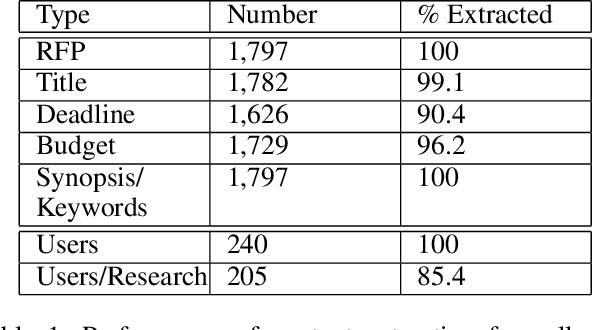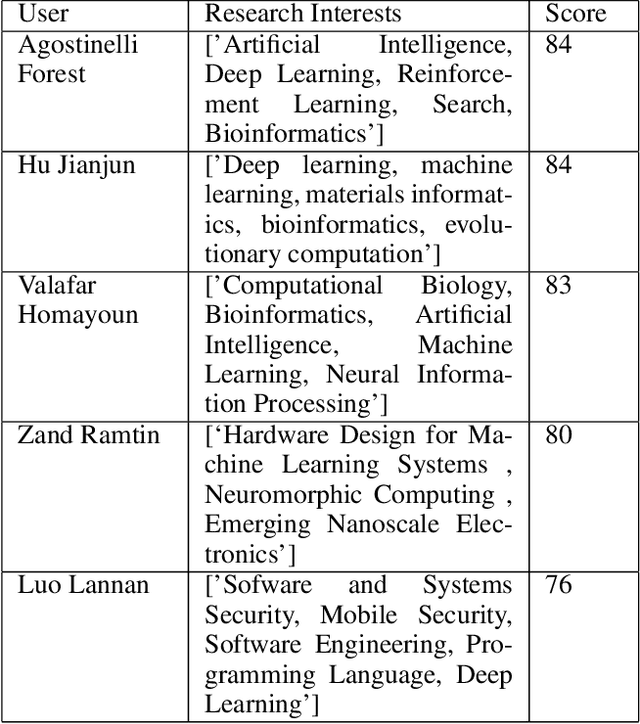Sai Teja Paladi
Promoting Research Collaboration with Open Data Driven Team Recommendation in Response to Call for Proposals
Sep 27, 2023Abstract:Building teams and promoting collaboration are two very common business activities. An example of these are seen in the TeamingForFunding problem, where research institutions and researchers are interested to identify collaborative opportunities when applying to funding agencies in response to latter's calls for proposals. We describe a novel system to recommend teams using a variety of AI methods, such that (1) each team achieves the highest possible skill coverage that is demanded by the opportunity, and (2) the workload of distributing the opportunities is balanced amongst the candidate members. We address these questions by extracting skills latent in open data of proposal calls (demand) and researcher profiles (supply), normalizing them using taxonomies, and creating efficient algorithms that match demand to supply. We create teams to maximize goodness along a novel metric balancing short- and long-term objectives. We validate the success of our algorithms (1) quantitatively, by evaluating the recommended teams using a goodness score and find that more informed methods lead to recommendations of smaller number of teams but higher goodness, and (2) qualitatively, by conducting a large-scale user study at a college-wide level, and demonstrate that users overall found the tool very useful and relevant. Lastly, we evaluate our system in two diverse settings in US and India (of researchers and proposal calls) to establish generality of our approach, and deploy it at a major US university for routine use.
ULTRA: A Data-driven Approach for Recommending Team Formation in Response to Proposal Calls
Jan 13, 2022



Abstract:We introduce an emerging AI-based approach and prototype system for assisting team formation when researchers respond to calls for proposals from funding agencies. This is an instance of the general problem of building teams when demand opportunities come periodically and potential members may vary over time. The novelties of our approach are that we: (a) extract technical skills needed about researchers and calls from multiple data sources and normalize them using Natural Language Processing (NLP) techniques, (b) build a prototype solution based on matching and teaming based on constraints, (c) describe initial feedback about system from researchers at a University to deploy, and (d) create and publish a dataset that others can use.
 Add to Chrome
Add to Chrome Add to Firefox
Add to Firefox Add to Edge
Add to Edge